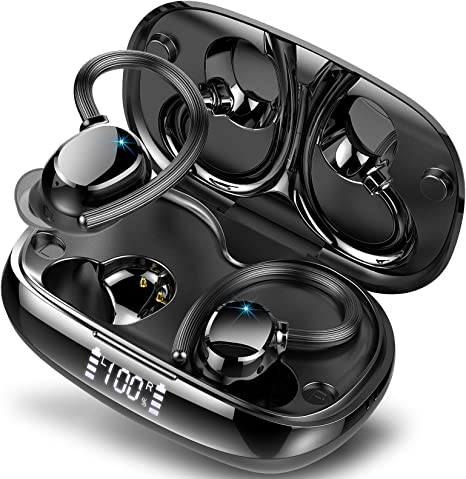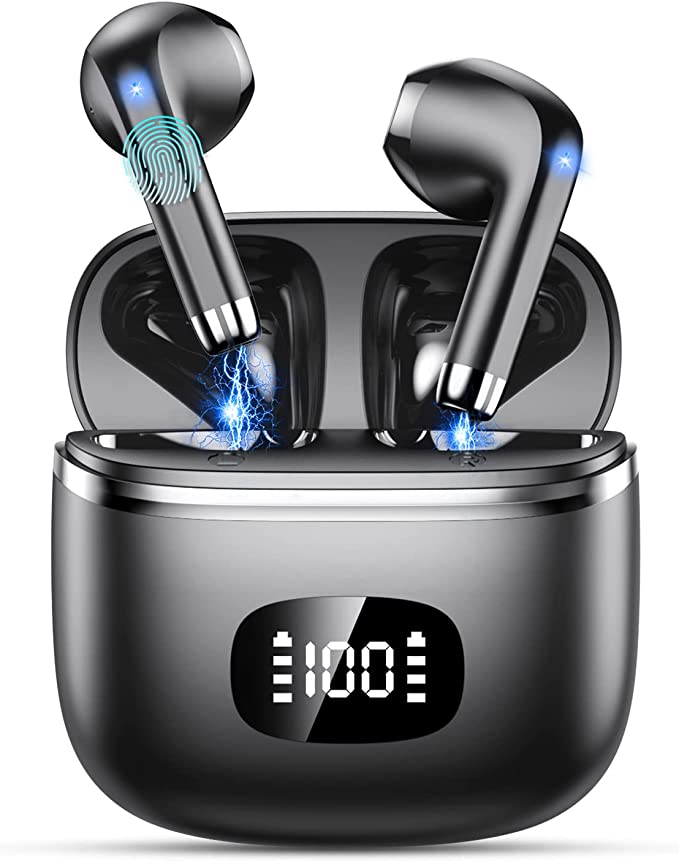Breathe Easy: The Xoopon AK16 Air Quality Monitor Gives You the Power of Knowledge
Update on June 11, 2025, 7:39 a.m.
Breathe Easy: Unmasking Your Indoor Air with Science and the Xoopon AK16
We share our homes and workspaces with a host of invisible companions. They don’t pay rent, but they’re with us almost constantly – tiny particles, unseen gases, and fluctuating conditions that collectively define our indoor air quality. Considering that many of us spend up to 90% of our lives indoors, according to the U.S. Environmental Protection Agency (EPA), the nature of this unseen environment becomes profoundly important. Startlingly, the EPA also notes that indoor air can sometimes be two to five times more polluted than the air outside. But how do you get to know these invisible roommates? Technology like the Xoopon AK16 Air Quality Monitor aims to be your personal guide, translating the hidden science of your air into understandable insights.
Understanding what you’re breathing is the first step towards creating a healthier sanctuary. This isn’t just about avoiding a “stuffy” room; it’s about safeguarding your well-being, enhancing your focus, and even improving your mood. Let’s pull back the curtain on some of the key players the Xoopon AK16 helps you track.

Particulate Matter (PM1, PM2.5, PM10): The Microscopic Dust Invaders
Imagine dust, but on a scale so small it’s invisible to the naked eye. That’s particulate matter. These are tiny solid or liquid particles suspended in the air, categorized by their size. PM10 particles are about the width of a fine human hair – think pollen or larger dust motes. PM2.5 particles are even smaller, roughly 1/30th the width of a human hair. These are the culprits often found in smoke and haze. Then there’s PM1, tinier still. The World Health Organization (WHO) and EPA have extensively documented that the smaller these particles, particularly PM2.5 and smaller, the deeper they can penetrate into our respiratory system, potentially reaching the lungs and even the bloodstream, which can contribute to respiratory issues and cardiovascular concerns over time.
Where do these microscopic invaders come from? Everyday activities are often the source. Cooking, especially frying or broiling, can release a surprising amount of PM2.5. Burning candles or incense, using a fireplace, pet dander, and even dust from outdoors infiltrating through windows and vents all contribute. The Xoopon AK16, with its ability to monitor PM1, PM2.5, and PM10, provides real-time feedback, allowing you to see how your activities – or even changing outdoor conditions like nearby wildfires – impact the particulate load in your air. This “fast refresh” capability means you see changes as they happen, not hours later.

Carbon Dioxide (CO2): The Story Our Breath Tells
Carbon dioxide is a natural part of the air we exhale. Outdoors, it’s generally present at around 400-420 parts per million (ppm). Indoors, however, especially in well-sealed or poorly ventilated spaces with several people, CO2 levels can climb significantly. While not acutely toxic at moderate indoor levels, CO2 acts as an excellent proxy for ventilation effectiveness. When CO2 levels are high, it often means not enough fresh outdoor air is circulating to dilute indoor-generated pollutants and the bioeffluents we all produce.
Why does this matter? You know that “afternoon slump” or feeling of “brain fog” in a crowded meeting room? Elevated CO2 can be a contributor. Research, including studies highlighted by organizations like ASHRAE (American Society of Heating, Refrigerating and Air-Conditioning Engineers), suggests that higher indoor CO2 concentrations (e.g., above 1000 ppm) can impair cognitive functions like decision-making, concentration, and overall alertness. The Xoopon AK16’s CO2 sensor quantifies that “stuffiness,” giving you a clear metric to decide when it’s time to open windows or improve air exchange.
Volatile Organic Compounds (TVOCs & HCHO): The Chemical Whispers
That “new car smell,” the aroma of fresh paint, or even the scent from some cleaning products? These are often caused by Volatile Organic Compounds (VOCs). VOCs are a diverse group of chemicals that easily evaporate into the air at room temperature. Formaldehyde (HCHO) is a particularly common and well-known VOC found in building materials (like pressed wood products), furniture, some fabrics, and household products. The term TVOC refers to the Total Volatile Organic Compounds, giving a broader sense of the chemical load.
According to the EPA, sources of VOCs are numerous and can include paints, varnishes, cleaning supplies, disinfectants, air fresheners, new carpets, and office equipment like printers. Short-term exposure can cause headaches, dizziness, and irritation of the eyes, nose, and throat. Long-term exposure to certain VOCs has been linked to more serious health concerns. The Xoopon AK16 includes sensors for both TVOC and HCHO, helping to unmask these often-unnoticed chemical signatures in your environment, alerting you if levels become elevated.

Temperature & Humidity: The Unsung Heroes of a Healthy Indoor Climate
While we often think of temperature and humidity in terms of comfort, they play a crucial role in overall indoor air quality and health. The “Goldilocks zone” for indoor humidity, as generally recommended by the EPA and ASHRAE, is between 30% and 60% (ideally not exceeding 50% to prevent mold). Too high, and you create a welcoming environment for mold spores and dust mites, both common allergy triggers. Too low, and it can lead to dry skin, irritated sinuses, and increased susceptibility to colds as mucous membranes dry out.
Similarly, maintaining an indoor temperature typically between 68-76°F (21-22°C) is generally considered optimal for comfort and productivity. The Xoopon AK16 diligently monitors both, helping you keep these foundational elements of a healthy and comfortable space in balance.
The Xoopon AK16: Your Smart Eyes on the Invisible
Understanding these individual pollutants is one thing; conveniently monitoring them is another. The Xoopon AK16 aims to make this complex task simpler. Its “16-in-1” capability means it’s tracking a suite of these key parameters simultaneously, including providing an overall Air Quality Index (AQI). The AQI is a helpful tool, much like a weather report for your air, that synthesizes various pollutant data into a single, often color-coded, number to quickly assess air quality. The device even includes buzzer alerts to notify you if conditions warrant attention.
All this information is presented on an “utral-high definition color screen,” designed for easy reading and quick identification of different values. Behind this display, the product mentions a “smart sensor and double ventilation structure design.” While the specific proprietary technology isn’t detailed, generally, good airflow across sensors is crucial for their performance. It helps ensure a representative sample of air is being analyzed, can improve response times to changing conditions, and reduces the chance of localized “dead spots” around the sensor. This, coupled with the “fast refresh data” claim, suggests the device is built for responsiveness.
The practicality extends to its power and design. A built-in 2000mAh battery offers around 7 hours of continuous use, and it recharges via a common USB Type-C cable. This portability, combined with a “low power consumption processing chip” and an energy-saving mode that activates after 30 minutes, means you can easily move it from your kitchen while cooking, to your home office during the workday, or even check the air in your car. For more permanent monitoring, a hanging hole on the back allows for wall mounting.
From Data to Decisions: Breathing New Life into Your Spaces
The true value of a device like the Xoopon AK16 lies not just in the numbers it displays, but in the informed actions it empowers. Seeing a spike in PM2.5 while searing dinner might prompt you to turn on the exhaust fan or open a window. Noticing CO2 levels creeping up in your study could be a reminder to take a break and ventilate the room. Detecting elevated TVOCs might lead you to investigate new furniture or recently used cleaning products as potential sources.
This awareness can, as the product information suggests, lead to “improved focus, mood, and overall well-being.” When your air is cleaner, when CO2 levels are optimal, your brain can function more efficiently. When irritants are minimized, your body isn’t fighting low-level inflammation. This can be especially reassuring for households with children, the elderly, or individuals with respiratory sensitivities or chronic illnesses, allowing for timely and effective problem-solving. It provides peace of mind that you’re taking proactive steps for a healthier environment. Its versatile design makes it suitable for various places where air quality is a concern – from grow rooms where CO2 management is critical, to school cellars or office cubicles.

Conclusion: Take a Conscious Breath – Your Health Will Thank You
The air inside our homes and workplaces is a dynamic, invisible ecosystem that profoundly impacts our health and quality of life. It’s an environment that deserves our attention. With tools like the Xoopon AK16 Air Quality Monitor, the unseen becomes seen, and the complex science of indoor air becomes more accessible. By understanding the invisible companions you live with, you gain the power to make conscious choices, to ventilate smarter, to identify and mitigate sources of pollution, and ultimately, to breathe a little easier. Taking control of your indoor air isn’t just about avoiding harm; it’s about actively cultivating a space where you and your loved ones can truly thrive.


















